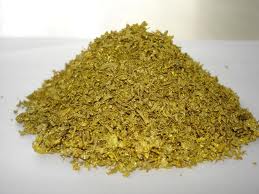 Unless you live high up on some remote mountain, your water is probably full of impurities. Even water coming out of the tap, after it has been treated by chlorine, still contains a number of contaminants. Unfortunately, chlorine is one of them. Some of the contaminants are metal or mineral particles, others are alive, such as bacteria or fungi. All can be dangerous and affect your health in a bad way. There are number of highly effective filters and, ideally, you should use more than one in combination to ensure that your drinking water is pure and healthy to drink.
Unless you live high up on some remote mountain, your water is probably full of impurities. Even water coming out of the tap, after it has been treated by chlorine, still contains a number of contaminants. Unfortunately, chlorine is one of them. Some of the contaminants are metal or mineral particles, others are alive, such as bacteria or fungi. All can be dangerous and affect your health in a bad way. There are number of highly effective filters and, ideally, you should use more than one in combination to ensure that your drinking water is pure and healthy to drink.
KDF or Kinetic Degradation Fluxion Media is relatively new, but highly effective first step in the water purification process. It is normally used as a ‘first line of defense’, a first filtration step before other methods are used, such as activated carbon or reverse osmosis.
What is KDF made of?
KDF consists of highly purified granules or flakes of copper and zinc alloy. It is very effective in the removal of a large number of common water impurities, such a bacteria, chlorine, pesticides, rust, hydrogen, algae, fungi, iron, nickel, lead, sulphides, calcium, cadmium, mercury, aluminum and arsenic. KDF also removes bad odor and unpleasant taste of water.
How it works
KDF works on the principle of electrochemical reduction or oxidation. It is known that all materials, including the particles of contaminants in the water, have slight electrical and magnetic charge, positive or negative, depending on their molecular structure. In order to attract the unwanted particles of impurities in the water, KDF copper and zinc particles are charged, one positively and other negatively. Positively charged copper attracts all negatively charged impurities, and negatively charged zinc attracts positively charged particles.
In effect, zinc and copper particles in the KDF create miniature electrolytic cells between each particle. The zinc plays the role of the anode and the copper of the cathode. The water and the particles of impurities behave as the electrolyte. When the particles of impurities in water pass through such electrolytic cell, some of them, especially metals, are attracted by the magnetic pull of the charged KDF particles. Non-metal particles chemically bind to the KDF zinc or copper particles forming copper hydroxides, zinc oxides, sulphates or hydroxides. Once the particles of impurities get attracted by charged particles of copper and zinc, they adhere to them, becoming neutralized and non-active.
A byproduct of this electrolysis process is ozone, which plays its own role in the water purification. The presence of ozone in the water creates hostile environment for algae, fungi and bacteria, effectively killing them and purifying water of all microorganisms.
The best way to utilize KDF is in combination with other filtration systems, such as charcoal filter or more advanced reverse osmosis or ionization system. KDF is often used in a mix with the activated carbon or together with activated carbon.
